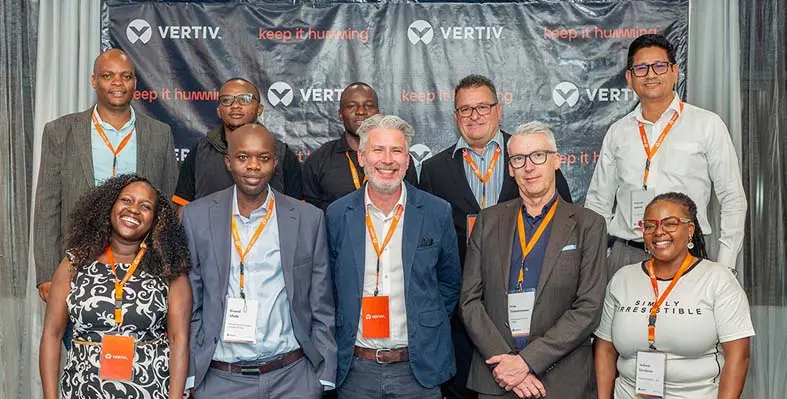Jon Abbott, sales director for strategic telecom clients in EMEA at Vertiv, has made note of the increasing challenges in meeting AI-driven demands in the telecommunications and data centre space
The sales director made the comments as he addressed Kenyan leaders in the telco, tower and colocation arena in Nairobi, acknowledging the rapidly changing technology landscape that is impacting their infrastructure and services.
According to the 2023 Digital Quality of Life Index, a study on digital wellbeing, Kenya ranks 82nd out of 121 countries in terms of AI readiness. “The challenge for Kenya is that AI adoption is already transforming the IT stack and our IT infrastructures. This means that accelerated architectures are needed to meet the requirements of AI workloads,” Abbott remarked.
He continued by pointing out that the tangible network developments required will include adjustments on the operational side that consumers do not see. This is likely to include changes in network ownership and increased costs of service largely driven by ever increasing demands for energy consumption as intelligent connectivity rises. “This will place a greater emphasis on efficiency, while more attention will also have to be paid to sustainability and emission reduction.”
A changing technology landscape
At the same time, significant technology changes are expected to progress in the near-future including a greater move to the edge of the network. According to Vertiv, this will drive tech collaboration and increased standardisation across the physical and logical infrastructure. The organisation also anticipates more open-source groups and commoditised hardware; data processing capability integrated into the network fabric; and new ecosystems with more private networks.
“Then there’s the Internet of Things (IoT), which has the potential to unlock insights and efficiencies across all sectors,” Abbott said. “The way this will evolve will be to propagate the landscape with processing capability, breaking the facility down into smaller and smaller localised facilities.”
AI and data centres
According to Abbott, the data centre as seen today will not disappear. Rather, they will continue to grow, but in parallel, more and smaller “edge” data centres will populate the landscape, each with the same fundamental physical requirements – always on, never getting too hot, which will place cooling systems under strain, and operating as efficiently and securely as possible.
“The challenges all this poses in terms of energy provision, particularly in the face of energy transition and sustainability requirements to meet the 2030 global emissions reduction goals, will be considerable,” he surmised.
Other hurdles to be overcome range from meeting the likely exponential growth in rack density and constraints on skills availability, to trade-offs between new builds and retrofits, power grid constraints, and an increasing need for short turn-around times as well as repeatable, quick-to-deploy designs.
“The bottom line is that AI will be a major challenge for network providers with data consumption and creation accelerating across all sectors, and data processing saturating the facility landscape,” Abbott concluded. “While this could be daunting for providers, having the right partner at your side – one that can assist with power and thermal management, and integrated rack solutions - every step of the way will help to smooth your deployment journey. Vertiv is well placed to be such a partner.”
Vertiv has recently formed a strategic distribution partnership with Redington to empower channel partners across Africa. Click here to learn more.






